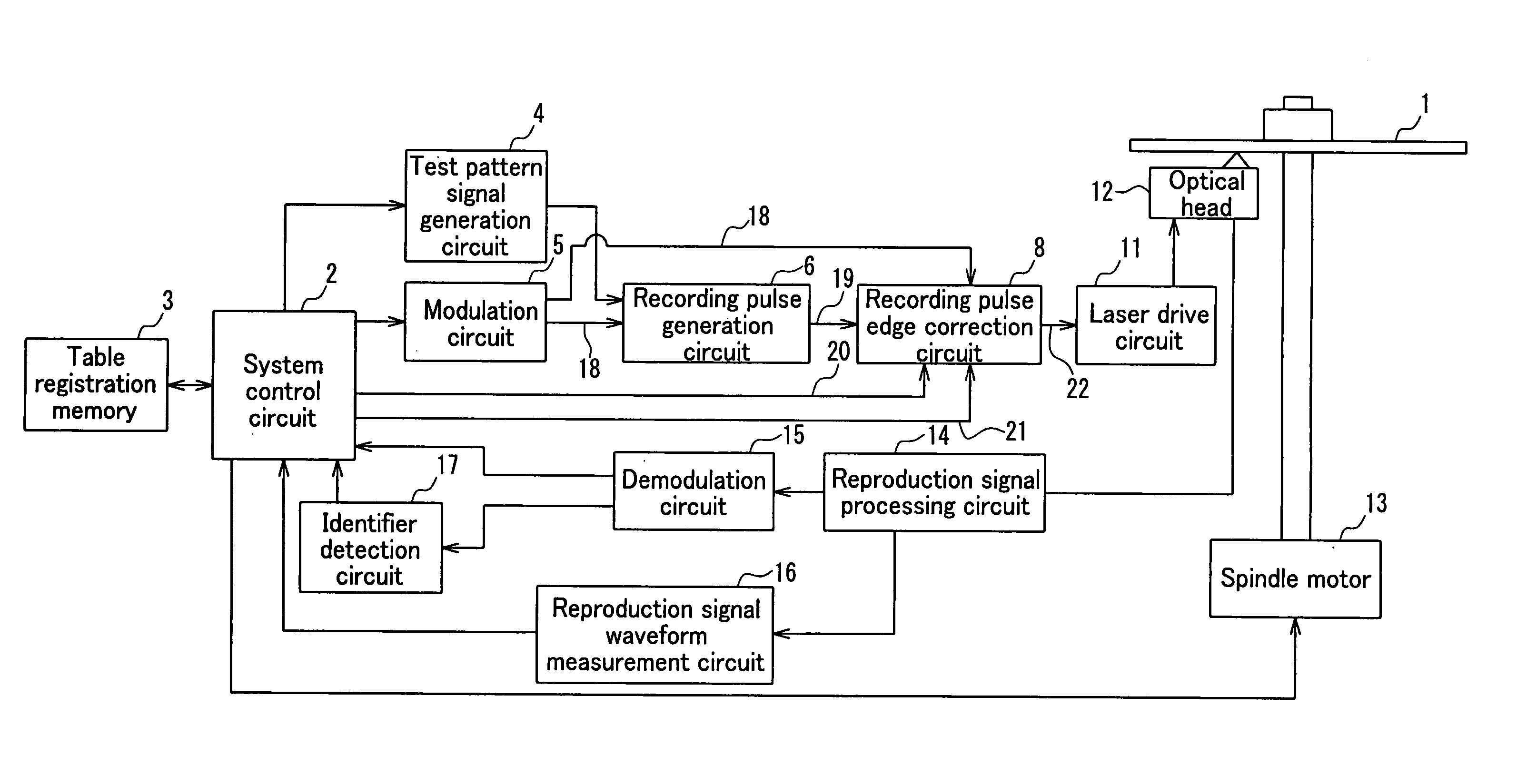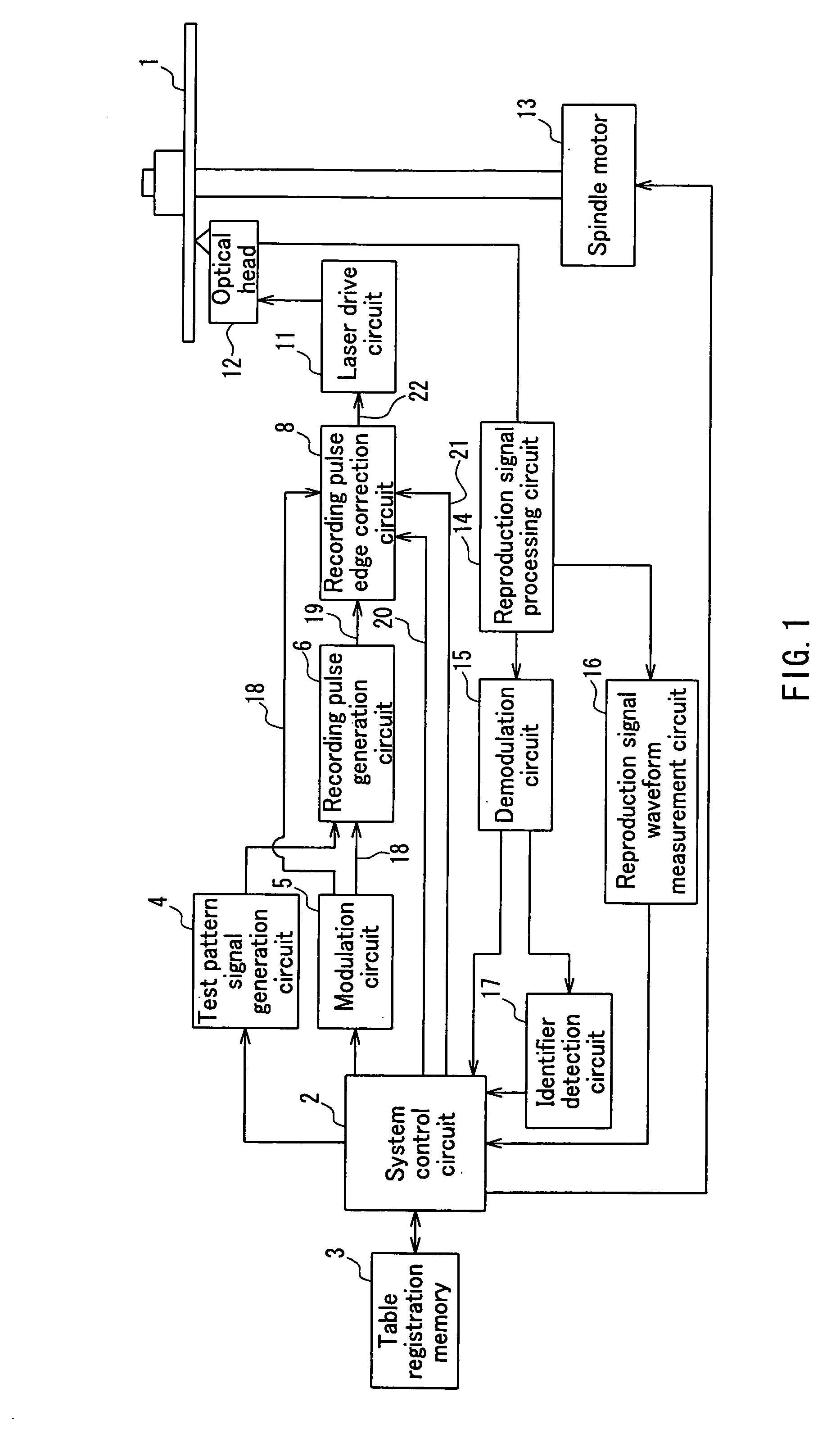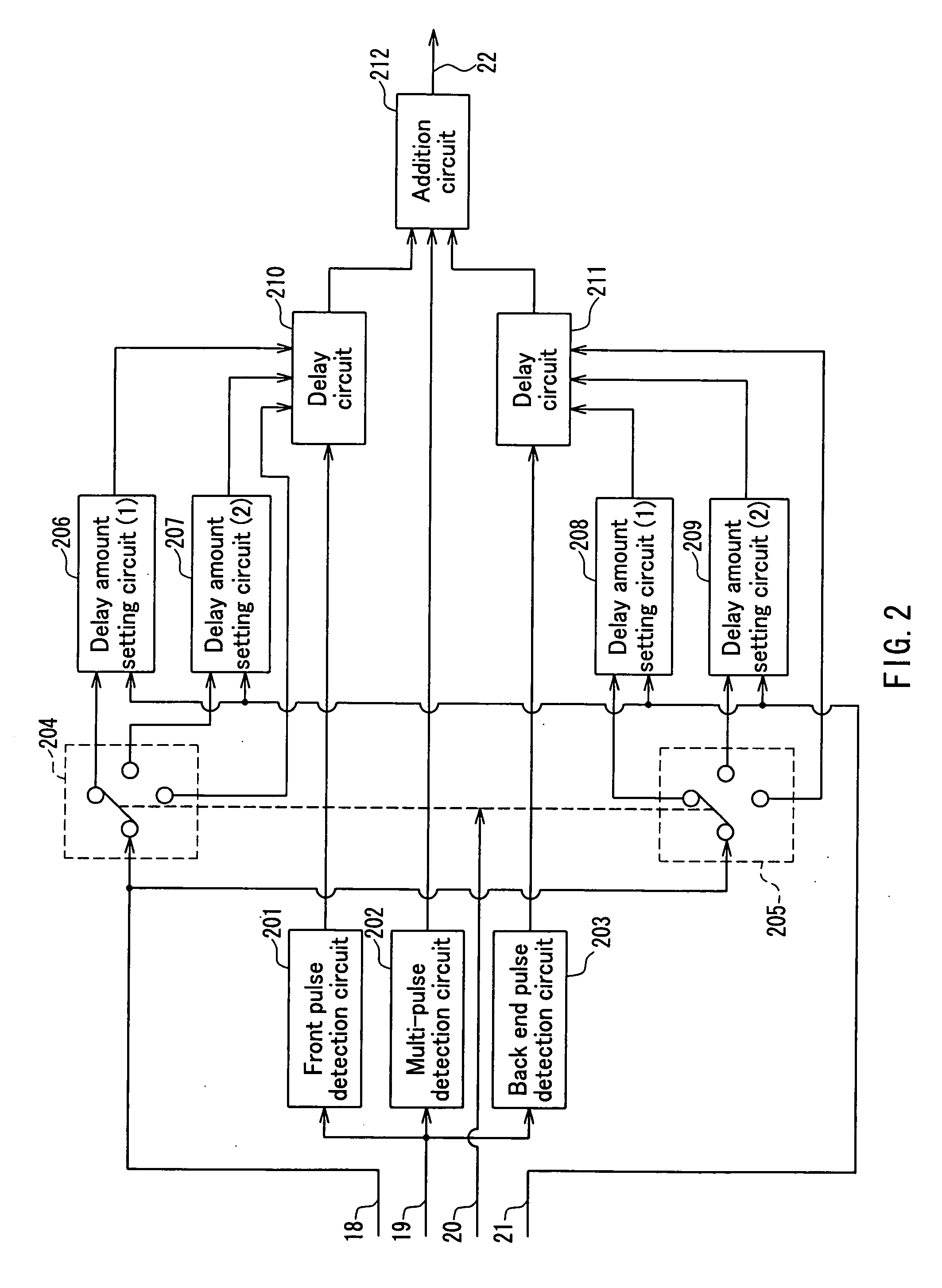Optical information recording method, optical information recording device, and optical information recording medium
a technology of optical information and recording medium, which is applied in the field of optical information recording medium, can solve the problems of excessive time taken for recording and reproduction apparatus to come to a state, affecting the shape of recording marks, and different thermal characteristics of optical disks, so as to reduce the time required to determine recording parameters
- Summary
- Abstract
- Description
- Claims
- Application Information
AI Technical Summary
Benefits of technology
Problems solved by technology
Method used
Image
Examples
embodiment 1
Operation of Embodiment 1
[0069] The following is a description of the operation of the recording and reproduction device of the present embodiment using the flowchart in FIG. 4 and operational charts in FIG. 5 to FIG. 7.
[0070]FIG. 4 is a flowchart showing the operation of the present embodiment. FIG. 5 is a waveform showing the operation according to the present embodiment when recording at an increased recording density. The operation to correct the edge positions of the front end pulse and the back end pulse in the combinations (that is, the elements of the correction table) of (pre-code length 7T—recording code length 3T—post-code length 7T), (pre-code length 7T—recording code length 5T—post-code length 7T) and (pre-code length 3T—recording code length 5T—post-code length 6T) is described in FIG. 5. Here, T represents the period of the channel clock. In FIG. 5, (a) is a channel clock signal, (b) is a waveform of the recording data signal 18, (c) is a waveform of the recording pu...
embodiment 2
Structure and Operation of Embodiment 2
[0118]FIG. 8 shows a perspective view of an optical disk1 (optical information recording medium) that is used in the present embodiment. In order to describe an internal portion of the optical disk, FIG. 8 shows the optical disk 1 with one part cut out. The optical disk is viewed from the side on which the laser light for recording and reproducing the optical disk is incident, and is made of a first information layer 801, which is positioned at the front, and a second information layer 802, which is positioned at the back. An identifier 305 is present independently on the information layers, and an identifier that corresponds to the correction accuracy is recorded.
[0119] Excluding the point that the identifier detection circuit detects the identifier on each information layer, the configuration and operation of the recording and reproduction apparatus of the present embodiment is the same as that of Embodiment 1.
embodiment 3
[0133] The present embodiment is an embodiment in which a disk whose recording conditions are identified by reproducing an identifier on the disk, and whose recording characteristics when, for example, the linear velocity of recording onto the disk is low, are such that even if the edge of the recording pulse is greatly changed then the effect on the edge position of the recording mark is small, and there are no unnecessary test recording steps to pass through by reducing the resolution of the elements of the correction table to record.
Configuration and Operation of the Embodiment 3
[0134] A structural overview of the recording and reproduction apparatus (optical information recording apparatus) for realizing Embodiment 3 is the same as that in FIG. 1. FIG. 9 is a diagram showing the detailed configuration of the recording pulse edge correction circuit 8 in FIG. 1. FIG. 10 is a flowchart used to describe the operation of the present embodiment, and FIG. 11 is a waveform diagram of...
PUM
 Login to View More
Login to View More Abstract
Description
Claims
Application Information
 Login to View More
Login to View More - R&D
- Intellectual Property
- Life Sciences
- Materials
- Tech Scout
- Unparalleled Data Quality
- Higher Quality Content
- 60% Fewer Hallucinations
Browse by: Latest US Patents, China's latest patents, Technical Efficacy Thesaurus, Application Domain, Technology Topic, Popular Technical Reports.
© 2025 PatSnap. All rights reserved.Legal|Privacy policy|Modern Slavery Act Transparency Statement|Sitemap|About US| Contact US: help@patsnap.com



